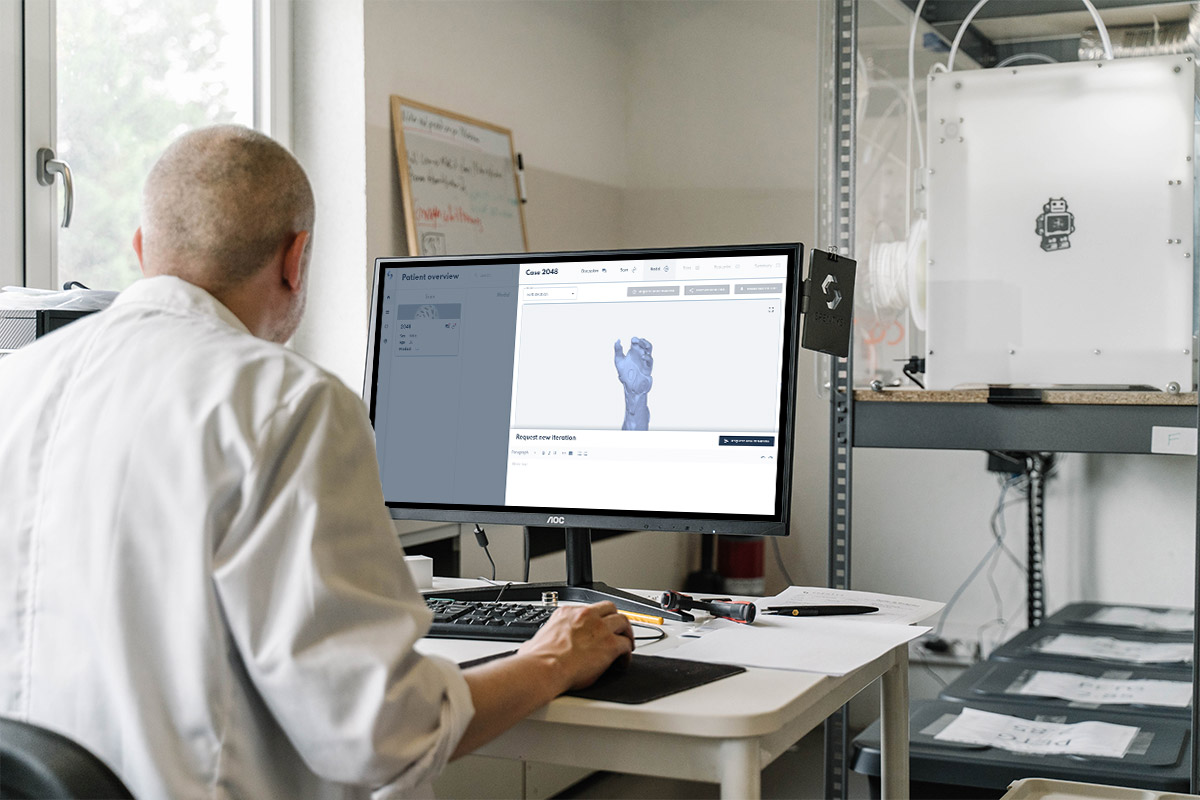Finding the best 3D Printer for Orthotics and Prosthetics
The manual manufacturing of orthoses requires time, a unique skillset and plenty of experience. Over the years, new technologies have been introduced to automate certain parts of the creation of orthotics. For example, CNC machines are commonly used for the fabrication of insoles. The three-axis machines can be pre-programmed with CAD software to build the insole by subtracting material from a solid block.

3D printing, also known as additive manufacturing (AM), works the exact opposite. The orthosis is created by building the orthosis one layer at a time. With 3D printing, the design restrictions related to tool access are lifted, and previously impossible devices to create with CNC machines have become standard practise with3D printing.

Why is 3D printing rapidly revolutionizing the O&P industry?
1. Freedom of design
With manual manufacturing or milling, there are many restrictions on the orthosis geometry that can be created. Building complex shapes with fewer components may not be feasible because of tool access restrictions, or because additional equipment may be required in order to remove material from a specific area. With 3D printing, this is no longer the case.
2. Automation
3D printing is becoming increasingly automated. After launching the 3D printer, it can complete the entire printing process without intervention from the user. As such, you can print overnight to accelerate the production time. Additionally, parts of the process like orienting the 3D model, determining the print settings, and sending it to the proper printer can be automated as well.
3. Minimize errors
With 3D printing, it is possible to reduce the number of procedures needed for the manufacturing of orthoses, leaving a smaller window for mistakes. When the 3D model is optimally designed, and the printer settings are tested and approved, the printing is smooth, and the orthosis doesn’t need additional adjustments to perfectly adapt to the patient’s body part.
4. Reduce waste
The material waste generated by 3D printing depends on the type of additive manufacturing. When compared to subtractive techniques like CNC machines, 3Dprinting generates much less material waste. The waste is minimal because you load the printer with just the necessary amount of material needed to build the orthosis (and support structure). Furthermore, it is possible to recycle most materials used. The waste efficiency of 3D printing is not only an ecological benefit. Reducing the need for raw materials also results in significant cost savings.

There are various 3D printing techniques available for O&P applications :
- FDM (Fused Deposition Modelling), also known as FFF (Fused Filament Fabrication), is based on thermal extrusion: A thermoplastic filament is melted and put on the building platform. Layer-by-layer the orthopaedic device is created.
- SLA (Stereolithography) and DLP(Digital Light Processing) both use photopolymerization. SLA was the first additive process invented: a UV laser beam solidifies a liquid resin.
- SLS (Selective Laser Sintering) is a 3D printing technology that utilizes laser melting: the laser beam fuses the powdered material in layers to form the object, no support is printed.
- Inkjet or Binder Jetting is like SLS, but instead of fusing the powder bed with laser or electron beam, a liquid binding material is selectively dropped into the powder bed.
Over the years, we have become experts in merging the fields of orthopaedics and 3D technology and discovered each 3D printing technique's advantages and disadvantages. Understanding these (dis)advantages is key in choosing a printer that suits your workshop. We decided to share all the knowledge we’ve gained during our R&D projects with you through a series of guides. You can find more information on these printing techniques and even some 3D printers we recommend in our expert guide on 3D printing. If you still have some dilemmas to tackle after reading our expert guide, don’t hesitate to reach out.
Medical equipment manufacturers are now more than ever investing in 3D technology to optimize the fabrication of orthoses and prostheses. Are you ready to join them?
The essential characteristics to look for when choosing a 3D printer for O&P applications
1. Easy-to-Use and Easy-to-Maintain
It may be difficult to understand how a 3D printer works, especially if you are a novice in the field. That’s why we advise you to start with an additive process that is easier to understand and control, such as the thermal extrusion technique.
2. Versatile
Orthopaedic devices are made from different materials to respond to different needs. It is therefore essential that the 3D printer comes with a wide range of functional biomaterials to manufacture several types of orthoses: rigid, semi-rigid, flexibles…
3. Reliable
You want to look for a robust machine that is designed to work on a consistent basis, for long hours and without failure.



Finding the best 3D Printer for Orthotics and Prosthetics

The manual manufacturing of orthoses requires time, a unique skillset and plenty of experience. Over the years, new technologies have been introduced to automate certain parts of the creation of orthotics. For example, CNC machines are commonly used for the fabrication of insoles. The three-axis machines can be pre-programmed with CAD software to build the insole by subtracting material from a solid block.

3D printing, also known as additive manufacturing (AM), works the exact opposite. The orthosis is created by building the orthosis one layer at a time. With 3D printing, the design restrictions related to tool access are lifted, and previously impossible devices to create with CNC machines have become standard practise with3D printing.

Why is 3D printing rapidly revolutionizing the O&P industry?
1. Freedom of design
With manual manufacturing or milling, there are many restrictions on the orthosis geometry that can be created. Building complex shapes with fewer components may not be feasible because of tool access restrictions, or because additional equipment may be required in order to remove material from a specific area. With 3D printing, this is no longer the case.
2. Automation
3D printing is becoming increasingly automated. After launching the 3D printer, it can complete the entire printing process without intervention from the user. As such, you can print overnight to accelerate the production time. Additionally, parts of the process like orienting the 3D model, determining the print settings, and sending it to the proper printer can be automated as well.
3. Minimize errors
With 3D printing, it is possible to reduce the number of procedures needed for the manufacturing of orthoses, leaving a smaller window for mistakes. When the 3D model is optimally designed, and the printer settings are tested and approved, the printing is smooth, and the orthosis doesn’t need additional adjustments to perfectly adapt to the patient’s body part.
4. Reduce waste
The material waste generated by 3D printing depends on the type of additive manufacturing. When compared to subtractive techniques like CNC machines, 3Dprinting generates much less material waste. The waste is minimal because you load the printer with just the necessary amount of material needed to build the orthosis (and support structure). Furthermore, it is possible to recycle most materials used. The waste efficiency of 3D printing is not only an ecological benefit. Reducing the need for raw materials also results in significant cost savings.

There are various 3D printing techniques available for O&P applications :
- FDM (Fused Deposition Modelling), also known as FFF (Fused Filament Fabrication), is based on thermal extrusion: A thermoplastic filament is melted and put on the building platform. Layer-by-layer the orthopaedic device is created.
- SLA (Stereolithography) and DLP(Digital Light Processing) both use photopolymerization. SLA was the first additive process invented: a UV laser beam solidifies a liquid resin.
- SLS (Selective Laser Sintering) is a 3D printing technology that utilizes laser melting: the laser beam fuses the powdered material in layers to form the object, no support is printed.
- Inkjet or Binder Jetting is like SLS, but instead of fusing the powder bed with laser or electron beam, a liquid binding material is selectively dropped into the powder bed.
Over the years, we have become experts in merging the fields of orthopaedics and 3D technology and discovered each 3D printing technique's advantages and disadvantages. Understanding these (dis)advantages is key in choosing a printer that suits your workshop. We decided to share all the knowledge we’ve gained during our R&D projects with you through a series of guides. You can find more information on these printing techniques and even some 3D printers we recommend in our expert guide on 3D printing. If you still have some dilemmas to tackle after reading our expert guide, don’t hesitate to reach out.
Medical equipment manufacturers are now more than ever investing in 3D technology to optimize the fabrication of orthoses and prostheses. Are you ready to join them?
The essential characteristics to look for when choosing a 3D printer for O&P applications
1. Easy-to-Use and Easy-to-Maintain
It may be difficult to understand how a 3D printer works, especially if you are a novice in the field. That’s why we advise you to start with an additive process that is easier to understand and control, such as the thermal extrusion technique.
2. Versatile
Orthopaedic devices are made from different materials to respond to different needs. It is therefore essential that the 3D printer comes with a wide range of functional biomaterials to manufacture several types of orthoses: rigid, semi-rigid, flexibles…
3. Reliable
You want to look for a robust machine that is designed to work on a consistent basis, for long hours and without failure.








_11zon.jpg)

